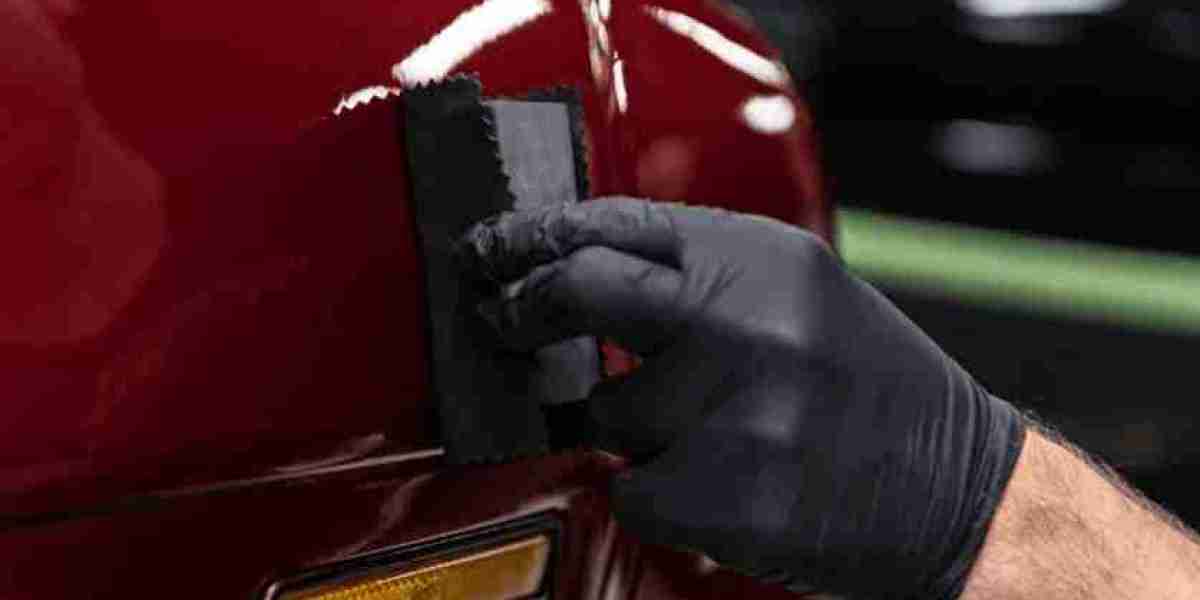Premium Ceramic Coating Service: The Ultimate Shield for Your Vehicle
In a world where every car owner desires to maintain the pristine condition of their vehicle, ceramic coating has emerged as a revolutionary method to protect and enhance the paintwork. This comprehensive guide explores the ins and outs of premium ceramic coating services, including their benefits, application process, maintenance, and why investing in such a service can be a game-changer for your vehicle.
What is Ceramic Coating?
Ceramic coating is a liquid polymer applied to the exterior surfaces of a vehicle. It chemically bonds with the factory paint, providing a protective layer that adds depth and shine while safeguarding against environmental hazards. Unlike traditional wax or sealants, which wear off over time, ceramic coatings offer long-lasting protection with the ability to withstand the rigors of weather, UV rays, and contaminants.
The Chemistry Behind Ceramic Coating
At the core of ceramic coatings is silica dioxide (SiO2), a compound derived from sand. When applied, the silica forms a strong bond with the vehicle’s paint, creating a hydrophobic (water-repellent) surface that repels dirt, grime, and other elements. This unique property not only makes the car easier to clean but also provides a gloss finish that enhances the vehicle's appearance.
Benefits of Premium Ceramic Coating
1. Enhanced Protection
The primary advantage of a premium ceramic coating is the level of protection it offers. It acts as a shield against:
- UV Rays: Protects the paint from fading or oxidizing due to sun exposure.
- Chemical Stains: Resists damage from bird droppings, tree sap, and road tar.
- Scratches: While not entirely scratch-proof, it offers a significant reduction in the likelihood of minor scratches.
- Environmental Contaminants: The hydrophobic surface repels water and dirt, making it harder for contaminants to adhere.
2. Easier Maintenance
A vehicle treated with ceramic coating is easier to maintain. The hydrophobic properties mean that water beads up and rolls off, carrying dirt and debris with it. This self-cleaning effect reduces the frequency and effort required for washing, saving you time and money in the long run.
3. Long-Lasting Results
Unlike traditional waxes, which may last only a few months, premium ceramic coatings can last anywhere from 2 to 5 years or even longer, depending on the product and conditions. This longevity makes it a worthwhile investment for car enthusiasts and everyday drivers alike.
4. Enhanced Appearance
Ceramic coatings provide a deep, glossy finish that enhances the color and overall look of your vehicle. The reflective surface can amplify the shine of the paint, ensuring your car stands out on the road.
5. Cost-Effectiveness
While the initial cost of premium ceramic coating might be higher than traditional waxing, the long-term benefits can lead to savings. The reduced need for frequent detailing and washes, combined with the extended life of the coating, makes it a financially wise choice.
The Ceramic Coating Application Process
Step 1: Surface Preparation
A successful ceramic coating application begins with thorough surface preparation. This step involves:
- Washing: The vehicle is meticulously washed to remove dirt and grime.
- Decontamination: A clay bar or similar tool is used to eliminate embedded contaminants from the paint surface.
- Polishing: Any imperfections, swirls, or scratches are polished out to provide a smooth surface for bonding.
Step 2: Application
Following preparation, the ceramic coating is applied. This involves:
- Temperature and Humidity Control: The environment must be ideal—typically between 60-80°F with low humidity—to ensure the coating bonds properly.
- Application Technique: The coating is applied using a microfiber applicator pad in small sections, ensuring even coverage.
- Curing Process: After application, the coating requires a curing period, which can range from several hours to a couple of days, depending on the product used.
Step 3: Final Inspection
Once cured, the coating undergoes a final inspection to ensure there are no missed spots or imperfections. Some service providers may even offer an additional layer of paint protection, typically through a topcoat.
Maintenance of Ceramic Coated Vehicles
To maximize the lifespan and effectiveness of your ceramic coating, proper maintenance is crucial. Here are some essential tips:
Washing
- Use pH-Neutral Soap: Traditional car soaps can strip the coating. Opt for pH-neutral products designed for ceramic coatings.
- Avoid Automatic Car Washes: Brush-based automatic wash systems can scratch the ceramic finish. Hand washing is recommended.
- Microfiber Towels: Always use microfiber towels to avoid further scratching.
Regular Inspection
Inspect your vehicle regularly for any signs of wear or damage to the coating. Periodic touch-ups may be necessary, especially on high-traffic areas.
Reapplication
Depending on the coating used, you may need to reapply a maintenance product or topcoat every six months to a year to refresh the bead and gloss properties.
Choosing the Right Ceramic Coating Service
When selecting a ceramic coating service, consider the following:
Reputation
Choose a provider with a proven track record and positive reviews. Don’t hesitate to ask for customer testimonials or before-and-after photos of their work.
Products Used
Inquire about the types of ceramic coatings used. Look for high-quality products with a high concentration of SiO2 for better durability.
Warranty
A reputable service provider will often offer a warranty for their work, indicating confidence in the products and the application process.
Expertise
The skill and experience of the technicians play a significant role in the successful application of ceramic coatings. Look for providers who are certified or have undergone training in the application of ceramic products.
Cost of Premium Ceramic Coating Service
The cost of premium ceramic coating services can vary widely based on several factors:
- Car Size: Larger vehicles like SUVs and trucks typically cost more due to the increased amount of product and labor required.
- Product Quality: Higher-quality coatings tend to be more expensive but offer better protection and longevity.
- Geographic Location: Prices may vary based on the region or market demand in your area.
- Service Package: Additional services such as paint correction and interior detailing can add to the overall cost.
On average, you might expect to pay anywhere from $500 to $2,000 for a high-quality ceramic coating service, with additional costs for paint correction or other services.
Conclusion
Investing in a premium ceramic coating service is a proactive approach to protecting your vehicle and maintaining its aesthetic appeal. While there are many products available for car care, few can match the longevity and protection levels offered by ceramic coatings. By understanding the benefits, application process, and maintenance techniques, you can make an informed decision that will keep your vehicle looking like new for years to come. Don’t compromise on your car’s shine and protection—consider premium ceramic coating as your go-to solution for automotive care.




